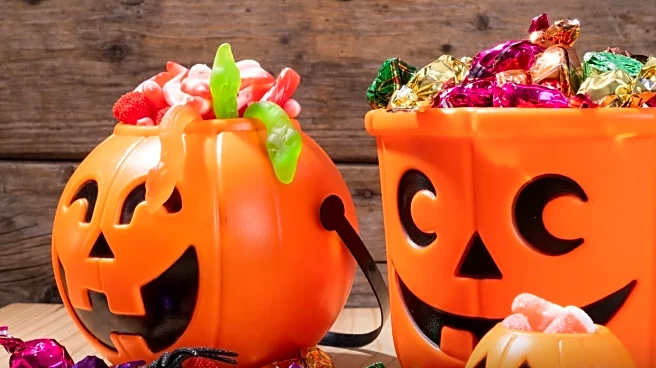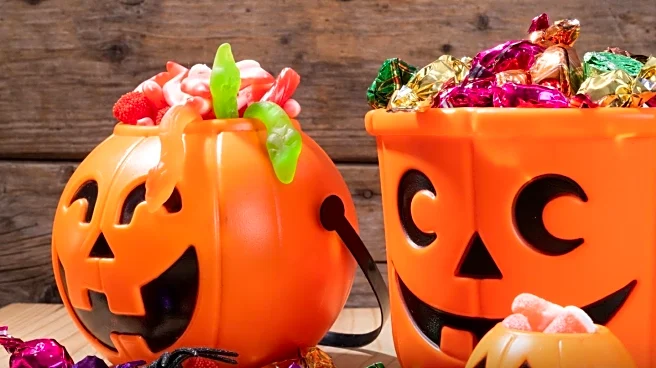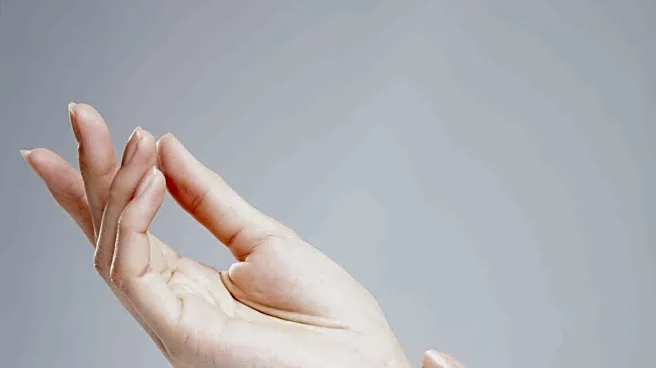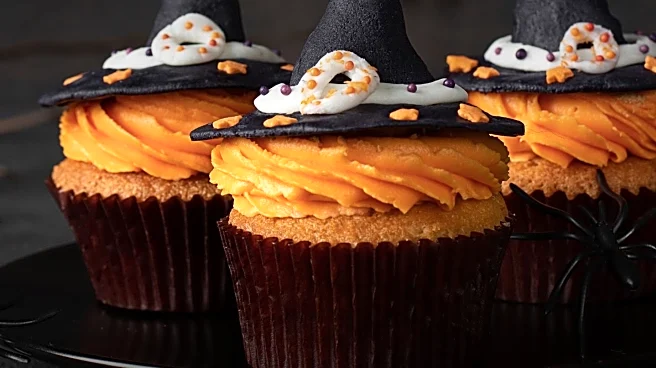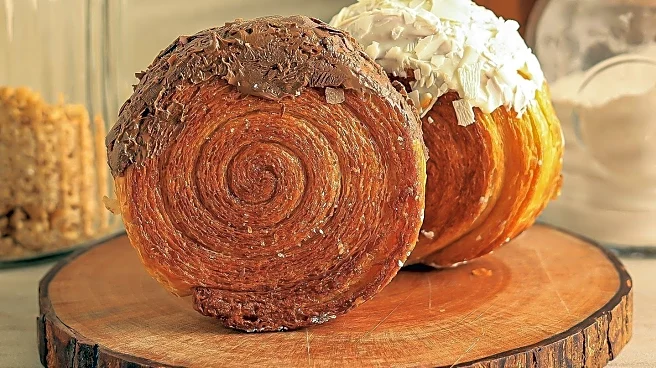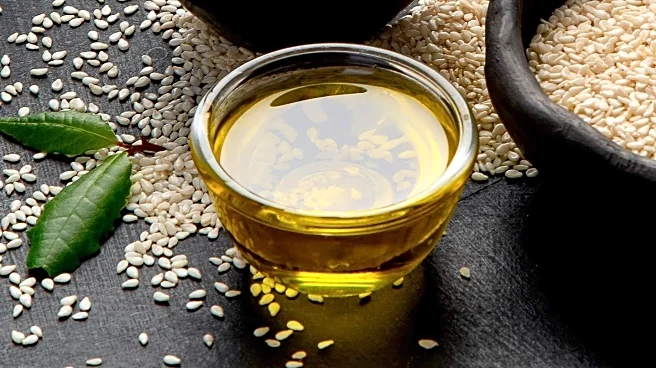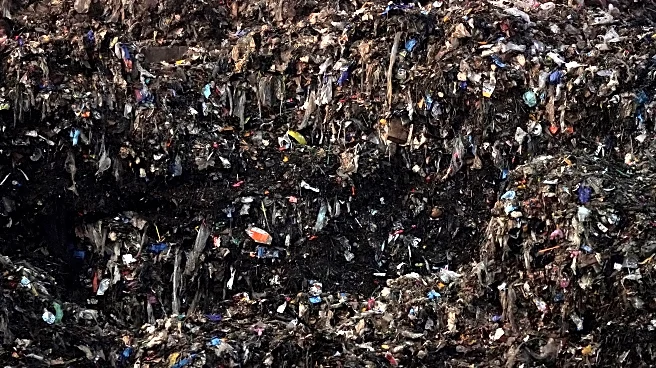What's Happening?
As Halloween approaches, questions arise about the shelf life of candy. According to Richard W. Hartel, a food science professor, candy does expire, but not in the same way as perishable items. The expiration
is often due to physical or chemical changes rather than microbial growth. Chocolate can last about a year if stored properly, while hard candy can last several years if protected from heat and humidity. Chocolate may develop a dusty appearance known as blooming, which affects its visual appeal but not its safety. The decision to discard old candy is subjective, based on personal preference rather than health concerns.
Why It's Important?
Understanding candy expiration is crucial for consumers, especially during Halloween, the top candy-selling holiday in the U.S. With Americans spending billions on sweets, knowing how to store candy can prevent waste and ensure enjoyment. Proper storage can maintain candy's flavor and texture, impacting consumer satisfaction and reducing unnecessary disposal. This knowledge can also influence purchasing decisions, encouraging consumers to buy candy with longer shelf lives or store it correctly to extend its usability.
What's Next?
As Halloween approaches, consumers may seek guidance on candy storage to maximize shelf life. Retailers and manufacturers might provide information on best practices for storing candy, potentially influencing sales and consumer behavior. The focus on candy expiration could lead to increased awareness of food preservation techniques, impacting how consumers approach holiday purchases and storage.
Beyond the Headlines
The discussion around candy expiration highlights broader themes of food safety and consumer education. It underscores the importance of understanding food science and storage techniques to minimize waste and maximize enjoyment. This knowledge can empower consumers to make informed decisions, fostering a culture of sustainability and awareness in food consumption.
